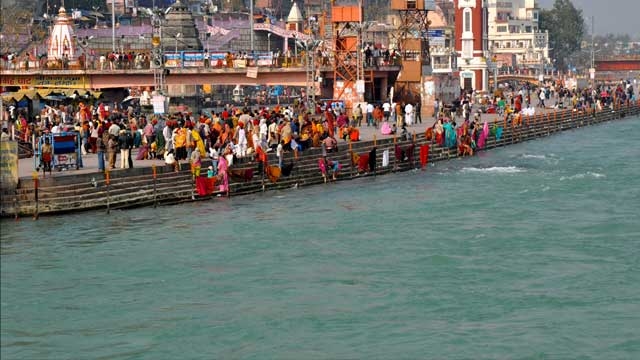
Containing COVID at Haridwar Kumbh a daunting challenge
The Haridwar Kumbh Mela, scheduled to take place next month, has become a major cause of concern for the Union government, which is struggling to contain the spread of COVID-19 across the nation

The Haridwar Kumbh Mela, scheduled to take place next month, has become a major cause of concern for the Union government, which is struggling to contain the spread of COVID-19 across the nation.
Since lakhs of people will be congregating at Haridwar, in Uttarakhand, it is feared that the Kumbh could become a super-spreader event unless stringent measures are implemented.
The Uttarakhand government has announced that that Haridwar Kumbh Mela would begin on April 1 and culminate on April 30. While the schedule for the mega religious event has been curtailed, pilgrims have been congregating in large numbers at Haridwar from March 11 when lakhs of people took a dip in the Ganga on the occasion of Maha Shivratri.
Also watch: Haridwar Muslims welcome Naga sadhus ahead of Kumbh
While it is difficult to implement social distancing and other standard procedures adopted to prevent spread of COVID-19, the challenge will be acute on the five ‘Shahi Snan’ days when thousands of people are scheduled to take bath simultaneously at various ghats. Therefore, the Centre has asked Uttarakhand to implement all anti-COVID measures strictly during the entire Kumbh Mela period. April 12 (Somvati Amavasya), April 13 (Chaitra Shukla Pratipada), April 14 (Baisakhi), April 21 (Ram Navami) and April 27 (Chaitra Purnima) are the ‘Shani Snan’ days listed by the Uttarakhand government.
Har Ki Pauri, Gau Ghat, Sita Ghat, Daksheshwar Ghat, Ganesh Ghat and Subhash Ghat are among the 15 river bank areas demarcated by the state government for holy dip.
Already one Shahi Snan has taken place on Maha Shivratri and crowds are expected to be huge during the five dates next month.
Since COVID-19 infections are spiking, Rajesh Bhushan, secretary in the Ministry of Health and Family Welfare, has written to the chief secretary of Uttarakhand asking him to take stringent measures to ensure social distancing. The communication comes close on the heels of the recent visit by a high-level central team to Uttarakhand to assess the ground situation.
The team was led by the director of National Centre for Disease Control (NCDC) visited Uttarakhand to review the medical and public health preparedness measures undertaken by the state for the Kumbh Mela.
The move comes at a time when Uttarakhand has gone through a period of hectic political activity with Tirath Singh Rawath taking over as chief minister from Trivendra Singh Rawat, who was chosen by the BJP high command after the party won power in 2017.
The Union health secretary has emphasised that more than 12 states in India have shown a surge in cases during the past few weeks. Therefore, the communication says there is a potential of an upsurge in cases in the local population, especially after the five Shahi Snan days.
The NCDC team has reported that up to 20 pilgrims and an equal number of locals are testing positive every day, indicating that the spread of the coronavirus is happening at a rapid pace. This positivity rate has the potential to rapidly turn into an upsurge in cases, Rajesh Bhushan has warned.
Therefore, Uttarakhand has been asked to step up testing of pilgrims as well as locals according to guidelines prescribed by the Indian Council for Medical Research. Around 55,000 tests are now being done every day at Haridwar and this consists of 50,000 rapid antigen and 5,000 RT-PCR tests.
The Centre is of the view that this is not adequate to screen the large number of pilgrims. Therefore, it has been advised that the number of RT-PCR tests needs to be significantly increased.
Uttarakhand has also been advised to scrupulously follow the standard operating procedures issued by the Union Ministry of Health and Family Welfare to restrict spread of COVID. Systems should be set up to generate early warning signs and the local population should be encouraged to follow self-reporting about symptoms, it has been stressed. Adequate critical care treatment facilities should be made operational and genome sequencing samples should be sent to labs in consultation with NCDC, the state government has been told.
Central government officials feel that a large number of pilgrims will arrive from states such as Maharashtra, Gujarat, Punjab, Chhattisgarh and Karnataka, where COVID-19 spread has reached worrisome levels.
Therefore, they are in favour of stringent steps to ensure wearing of masks, use of hand hygiene and implementation of social distancing to avoid a super-spreader event situation. Officials say the Kumbh Mela has become a major cause of concern in addition to the assembly elections in Tamil Nadu, Puducherry, West Bengal, Kerala and Assam where campaign rallies are hugely crowded with no social distancing norms or masks.


